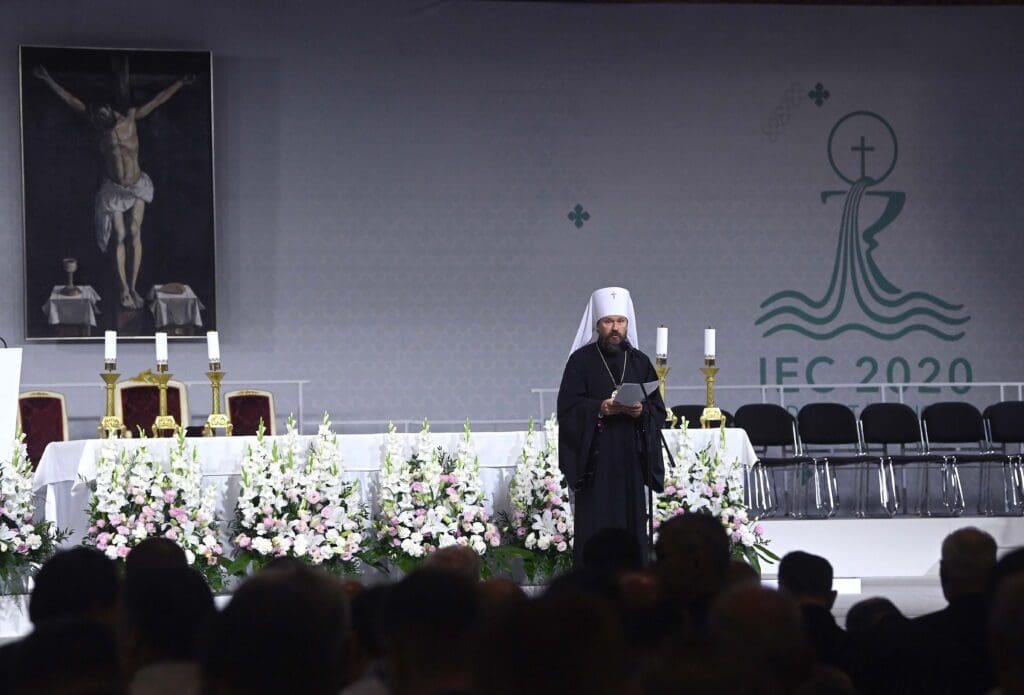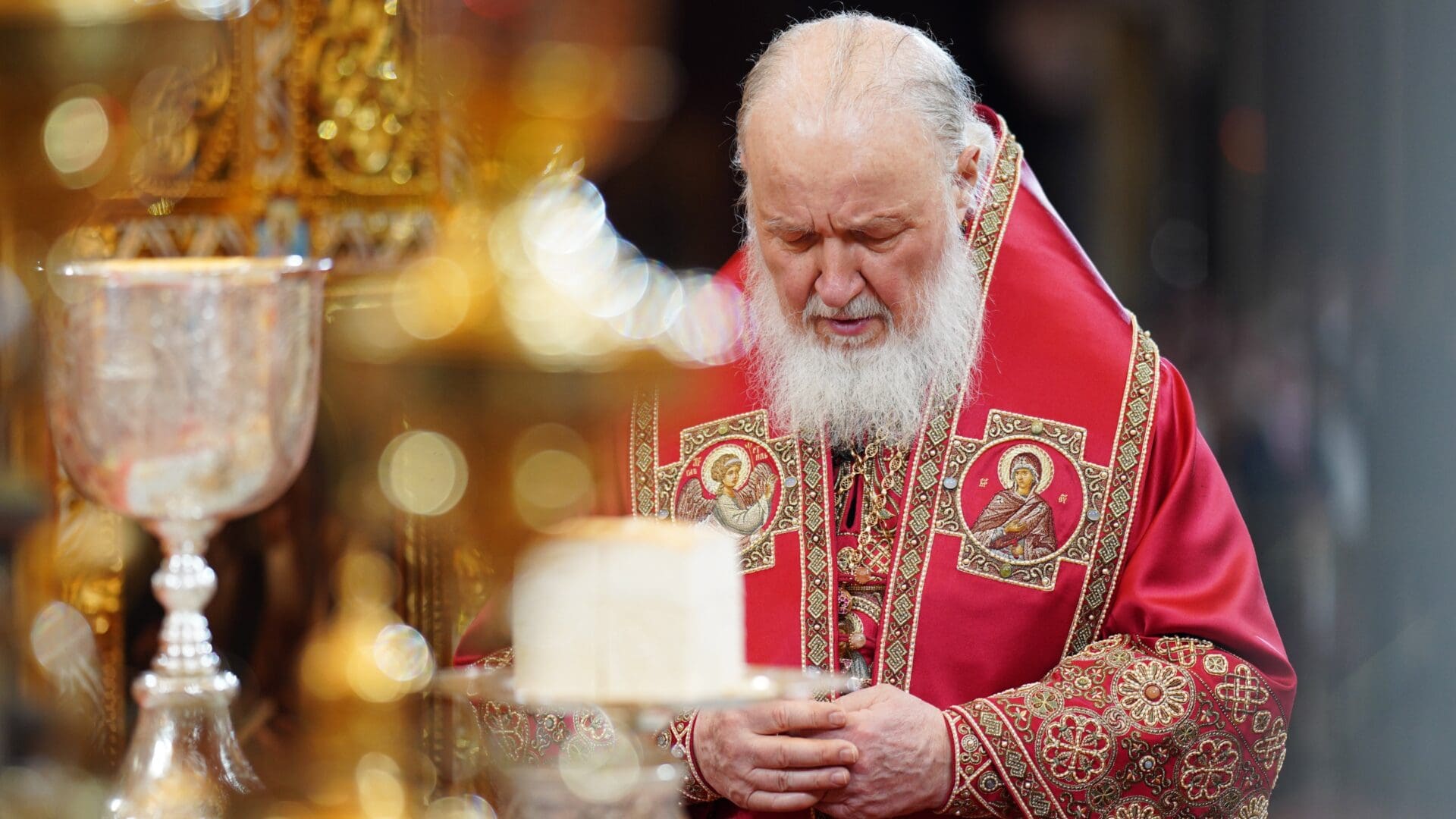On 26 April, the Prague announced that they had placed the head of the Russian Orthodox Church on the Czech national sanctions list. From now on, Patriarch Kirill of Moscow cannot enter Czechia, any assets he might own in the country are now frozen, and he cannot do any further financial transactions with the help of Czech intermediaries either.
Patriarch Kirill is the first person to be sanctioned under the Czech version of the Magnitsky Act that was adopted last year in Prague. The Magnitsky Act allows for each country to register even more sanctions on Russian individuals and entities than what the EU accepted. The Patriarch was sanctioned for his alleged support for the war, after making comments such as sacrificing oneself in the line of duty ‘washes away all sins’ and characterising the war as having a ‘metaphysical significance’ in battling sin that is spreading in the West.
Hungary has been vocally against sanctioning Patriarch Kirill and in fact, Budapest played a key role in preventing an EU-level sanction against the head of the Russian Orthodox Church. The Hungarian government came out against the sanctions
after multiple Orthodox leaders turned to Prime Minister Viktor Orbán,
asking him to oppose the sanctioning in protection of the freedom of religion. Serbian Orthodox Patriarch Porfirije and Syriac Orthodox Patriarch Ignatius Aphrem II both personally turned to the Hungarian Prime Minister. Answering the call of the representatives of Orthodox communities, Hungary recognised that the Russian Orthodox Church has some 100 million members worldwide, and the sanctioning of its leader would isolate religious people from their spiritual leader. The Patriarch is regularly prayed for and commemorated during church services in Hungary, too, which is also home to a Hungarian Orthodox community under the Moscow Patriarchate.
Hungarian Orthodox Communities
Much like most other Orthodox communities all around the world that are located in countries without their own autocephalous Orthodox church, the Hungarian community is also fragmented. There are five recognised Orthodox communities (not counting the Hungarian Coptic Orthodox Church). These are the Serbian Orthodox Diocese of Buda, the Universal Patriarchate of Constantinople–Orthodox Exarchate of Hungary, the Hungarian Bulgarian Orthodox Church, the Romanian Orthodox Diocese of Hungary and the Hungarian Diocese of the Russian Orthodox Church (Moscow Patriarchate). In the 2001 census, 14,520 named one of these Orthodox churches as their church, while ten years later 13,710 people did so. In other words, 0.1 per cent of the total population or around 0.3 per cent of those who disclosed their religious affiliation belonged to one of the Hungarian Orthodox churches.
The Hungarian Diocese of the Russian Orthodox Church (Moscow Patriarchate) has 11 places of worship (four in Budapest, and one in Miskolc, Nyíregyháza, Szeged, Gyöngyös, Debrecen, Tokaj, and Hévíz respectively. The Hévíz one was built in 2020, to specifically cater for the numerous Russian tourists flocking to the resort town at the time). The current metropolitan of Budapest and Hungary is Hilarion (his secular name is Grigory Valerievich Alfeyev).

Hilarion is a decorated, very well noted theologian and accomplished composer. He gained one of his doctorates in theology from Oxford University, and became a Metropolitan at the age of 44. For a long time he has been rumoured to have high chances of becoming the leader of the Moscow Patriarchate at some point. He has also been known as the ‘foreign minister of the Russian orthodox church’ as well as its crown prince. He never openly condemned the war, but recently, he called for paying for the ‘cessation of every military confrontation between Russia and Ukraine’. Coincidentally, on 7 June 2022 he was relocated to Budapest, and released from his high-ranking duties as president of the Department of External Church Relations and permanent member of the Holy Synod of the Russian Orthodox Church. It is his second time to be appointed to serve in Budapest: he had already led the Hungarian church between 2003 and 2009.
During this recent Apostolic Visit to Hungary,
Pope Francis met with Hilarion, and the two conversed for about 20 minutes.
The presence of an Orthodox community in Hungary under the Moscow Patriarchate raises the question—what is the spiritual significance of Kirill to this Hungarian community?
The Structures of Eastern Orthodoxy
To understand the significance of Kirill to the Hungarian community (whose rights to freedom of religion the Hungarian government claimed to protect when rejecting the sanctions) it is needed to dive deeper into the structure of Eastern Orthodoxy. The Eastern Orthodox Church consists of fourteen fully recognised (plus two partially recognised) separate and autocephalous (that is, self-governing) churches. These churches are highly autonomous and recognise each other as canonical. Currently, the Orthodox patriarchates are: Constantinople, Alexandria, Antioch, Jerusalem, Moscow, Georgia, Serbia, Romania, and Bulgaria, while the archbishops and metropoles (they differ only in name from patriarchates but not in the degree of their independence) are: the church of Cyprus, Greece, Albania, Poland and the Czech lands and Slovakia (the last two form a church together). The two partially recognised autocephalous churches are in the United States and in Ukraine. It is important to note that the jurisdiction of these churches does not necessarily coincide with national borders. Within these 14 (or 16) churches, smaller parishes report to the mother church, while leading officials are usually appointed by the mother church, too. The heads of the 14 (or 16) Orthodox churches, on the other hand, do not report to any higher earthly authority.
On the rare occasions when a question arises which is beyond the scope of an individual church, synods, sometimes known as Eastern Orthodox ‘ecumenical councils’, can also be organised, bringing together the 14 (or 16) orthodox churches to collectively discuss and decide on religious matters. This council’s authority (that is the collective decision of the 14-16 heads) is believed to be superior to any autocephalous church. While the Ecumenical Patriarch of Constantinople is known to be the ‘first among equals’—but far from being as powerful as the Pope in the Roman Catholic church—he has only a symbolical role and no real dictating authority (other than over the Constantinople church) within the structures of Eastern Orthodoxy.
The Moscow Patriarchate is the largest of the Eastern Orthodox churches,
with an influence extending beyond the borders of the Russian Federation.
Legally (by sacral standards anyways), all of the churches and local communities that are under the Moscow Patriarchate (outside Russia) are separate, as they are registered under the host state, and they all have their regional headquarters. Under the canon law, however, the Moscow Patriarchate has a large degree of influence over these churches, religious dogmas and leadership. Unilaterally, local communities cannot break away from the Moscow Patriarchate (or if they do, that is a schism). In case a local parish wants to break away from the Moscow Patriarchate, the Ecumenical Patriarch of Constantinople, Bartholomew I can be asked to grant independence to the respective local community; however, it is a lengthy and difficult process with no certain results at the end. Ukraine, for instance, had been asking for autocephaly for decades after the collapse of the USSR from the Moscow Patriarchate until 2019, when it was finally granted.
In other words, the primate of Orthodox churches all over the world under the Moscow Patriarchate is Kirill, and all local believers are under his spiritual leadership. As the Hungarian Diocese of the Russian Orthodox Church is also under the Moscow Patriarchate, there is a recognised religious community in Hungary, with Kirill as its spiritual leader. Sanctioning him by the EU would therefore impact the religious rights of Orthodox worshippers in Hungary.








